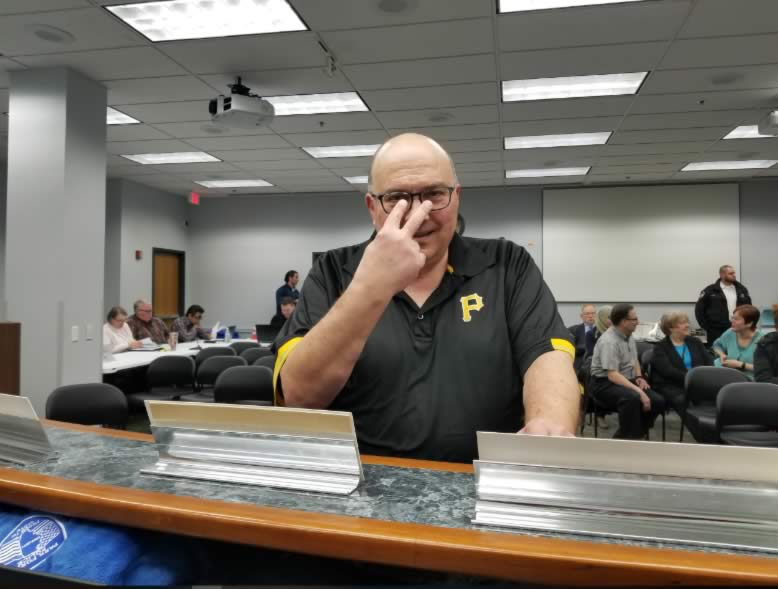
Commentary
By John A. Ostenburg
Environmental sustainability is the terminology applied to planned efforts to preserve natural resources with minimal dependence on synthetic products, especially those that emit carbon dioxide and other greenhouse gases. The sustainability movement is focused on concerted efforts to slow down the earth’s current warming process.
Global warming is an international concern and has caused leaders of various nations to come together to establish certain standards they hope will help preserve our planet as we have known it for centuries. Agreements such as the Kyoto Protocol have codified standards that some countries now are applying to the everyday activities of their citizens and to industrial/commercial endeavors within their borders.
Media attention on global warming — especially that which resulted from the production of Al Gore’s video lecture, An Inconvenient Truth, that won an Academy Award and positioned the former vice president subsequently to win the Nobel Prize — has led to widespread concern within the general public. More and more Americans are looking to their federal, state, and local governments to take significant steps toward reversal of the current global warming trend.
While the administration of former President George W. Bush gave scant attention to environmental problems, the current administration of President Barack Obama seems headed in a different direction. Under the leadership of Secretary of Energy Dr. Steven Chu, himself a Nobel Prize winner, a program has been developed to promote energy savings by both governmental entities and individual citizens, which in turn will reduce the production of greenhouse gases. Much of the economic stimulus money allocated by Congress at the direction of the Obama administration, is earmarked for energy-saving projects that include both more and better research and also the creation of jobs in industries designed to promote environmental sustainability.
Municipalities also are becoming more involved in the sustainability effort. The Mayors Climate Protection Agreement and activities of such organizations as the National League of Cities are driving more and more local government leaders to develop sustainability plans for their cities and towns.
But individual citizens also can contribute to the environmental sustainability effort on their own. Each individual no doubt sincerely asks himself or herself the question, “What can I do?” without realizing that the combined effect of doing the same thing as numerous fellow citizens will be significant. Just stopping some daily actions — those that contribute to environmental instability — will have positive results; actually taking even small steps to reverse the way this currently are heading will be even more meaningful.
Recently I attended the first Green Cities Conference sponsored by the National League of Cities and was stirred by the comments of one of the speakers who was addressing the problem of plastics in landfills. He mentioned the number of plastic water bottles that are discarded every day and I suddenly got a rush of guilt feelings. At that time, on average, I was drinking about 10 bottles of water a week, either at home or at work. On the spot, I made a personal commitment not to drink bottled water again.
That was about four months ago, so I figure I now have eliminated about six and one-half cases of plastic bottles from landfills. If I live to be 70, that’s a little more than 3,000 plastic bottles that I alone will keep out of the waste-stream. Those figures make me realize that indeed, one individual can make a difference.
So here are a few things that I think every individual can do as part of a personal environmental sustainability plan.
- Stop drinking bottled water, which — incidentally — is not as pure as your average tap water.
- Set one day each week on which you won’t drive your automobile.
- Take canvas bags with you when you shop, rather than carrying home your goods in plastic bags.
- Run your dishwasher in the evening at a time when overall electric consumption is lower.
- Get a rain-barrel to use at your home as a means of watering plants in a more natural way.
- Buy produce that is locally grown and thus does not need to be transported across the country by fuel-guzzling vehicles.
- Use public transportation as much as possible.
- Walk more; it not only promotes environmental sustainability, but also human sustainability.
- Take plastic covers received with dry cleaning, tie the bottoms, and use them as garbage bags.
- Recycle, recycle, recycle.
These are just 10 steps that any individual can take to help preserve our plant. None is dramatic. None requires any great amount of sacrifice. But all will help to keep our planet green.
Meanwhile, encourage your local leaders to create sustainability programs for your city or town. In my community of Park Forest, we’re doing that right now. The elected officials, the professional staff, and volunteer community members are joining efforts in establishing a program that hopefully will have long-term positive effects for the air we breathe, the water we drink, and the good earth on which we live. The more communities that do the same, the better chance we have of passing on to our children and grandchildren an earth on which it is a pleasure to exist.
John A. Ostenburg is mayor of Park Forest, Illinois, and formerly served in the Illinois House of Representatives. He is the chief of staff for the Chicago Teachers Union. E-mail him at [email protected]. This article is from his blog The Outpost Observer, Copyright © 2009 John Ostenburg, used with permission.








